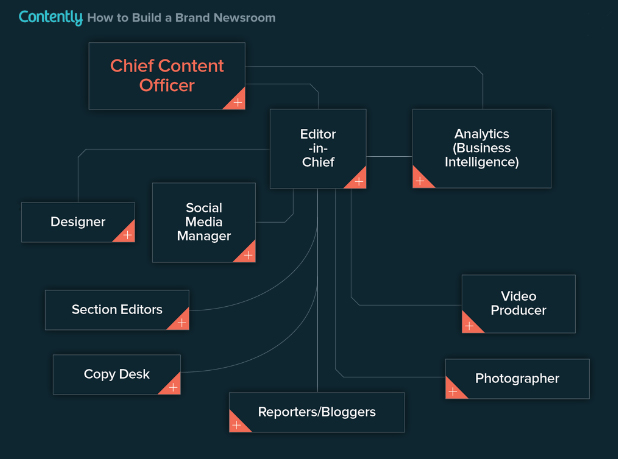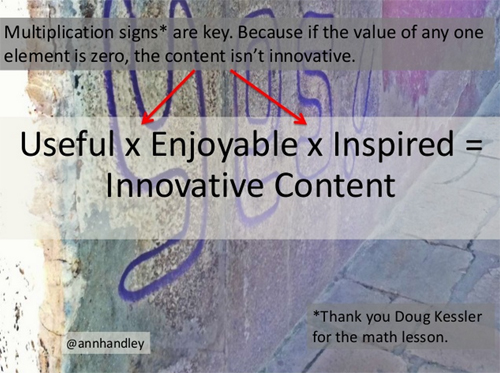This article first appeared on the Content Strategist. Screaming, “I want to be a brand publisher!” from the rooftops is the easy part. Figuring out how to become one is much more difficult—after all, no two brand publishers seem to look alike. Just look at these examples:
- Instead of just uploading blog posts on personal finance, American Express went all-out with OPEN Forum, an interactive online community for small business owners who want to make better decisions.
- Chipotle could have just uploaded beautiful photos of their burritos, but instead they spent over $1 million to produce a four-part satirical web series attacking Big Ag.
- Social sharing app Buffer shifted their content strategy from ”blogging about social media” to “creating high-impact posts for a broader audience and building relationships with influencers.” The result? Thousands of shares per post and increased revenue.
While we can marvel at the end result of brand publishing, how do you actually get there?
YOU ARE ALREADY A PUBLISHER, SO ACT LIKE ONE
“Here’s the reality: Each company with a website already IS a publisher,” said Ann Handley, author of the bestselling book Content Rules and Chief Content Officer of MarketingProfs. “Even if all a company does is publish a blog or a Facebook page or a Twitter stream, that’s all publishing.” So how can brands live up to that publisher title? It starts with having a clear goal in mind. That could mean direct sales, lead generation, brand awareness, customer retention, brand loyalty, or a combination of several goals. “If a casual marketer wants to become a publisher, there needs to be a business model behind the content,” said Joe Pulizzi, founder of the Content Marketing Institute. That means understanding that simply blogging about topics their target customers might be interested in isn’t enough. “Just creating content that people like doesn’t mean it will help attract or retain customers in some way,” added Pulizzi.
BUILD A STAFF OF JOURNALISTS THAT ADVOCATE FOR THE READER
One of the first things that brand publishers do is build a staff that can create content that will consistently engage readers. This is one of the biggest hurdles for brands. According to HubSpot’s 2013 State of Inbound Marketing report, only nine percent of companies employ a full-time blogger, and inbound marketing teams typically have fewer than six members. The stats are even more dismal for SMEs, with only one in eight businesses publishing more than three blog posts in a year, according to a survey from blogging tool Passle. “The casual marketer can never get funding for additional staff because they can’t make a business case,” said Pulizzi. But smart brand publishers that successfully evangelize their content (see our 4-step guide to doing so) and make the case that their content leads to business results can get the resources to build a staff—even if that team is just part-time freelancers at first. It’ll get you on the road to creating an in-house brand newsroom that might look something like this: 

According to Handley, journalists tend to serve the reader first, instead of supervisors, clients, or the CEO. And that’s a good thing. “Paradoxically, that serves a company’s needs far better—because the content they create is customer-driven vs. Corporate-driven,” she said.
SHIFT FROM “SPREAD METRICS” TO “RELATIONSHIP METRICS”
Another stark difference between casual brand bloggers and brand publishers is how they measure the success of their content. Casual bloggers tend to overly focus on “spread metrics” such as pageviews, visitors, and social shares. Their idea is that the more “viral” the content, the better — but this approach isn’t sufficient. “Firstly, you need to look at more than just social shares for your own content,” said James Blackwell, Co-founder of BuzzSumo, a social sharing analytics tool. According to Blackwell, while shares can measure the popularity of your content, they are really most useful for analyzing the competition. “After all you can’t track competitor pageviews, time on page or sign up rates so shares are one of the few metrics you have,“ he said. With your own site, you’ll have the advantage of tracking other metrics. “You need to clearly define your goals,” he said. “If you’re running a blog then this might be measuring the signup rate of email subscribers for each post, or product signup conversion rate. Which posts have performed the best? What’s the common theme among top performing posts?” This leads us to the type of metrics that brand publishers are starting to focus on: relationship metrics. Rather than focusing on how many eyeballs their content gets, brand publishers need to focus on the relationships that they’re building with readers. How long are readers sticking around and consuming your content? How often do they come back and how long do they stay? What percentage of visitors actually finish viewing your stories? 
PLAY THE LONG GAME
Sometimes, when casual brand bloggers devote more resources to storytelling and start becoming full-fledged publishers, they make a crucial mistake: they expect instant results. “It’s a long game,” explains Blackwell. “You’re not going to see results overnight and you need to be providing value to target readers. Those businesses and publishers understand this.” Joe Pulizzi made a similar assessment, noting that most casual marketers lack patience. “It takes 12-18 months to create real, sustained audience participation,” he said. “Most casual marketers just don’t want to wait that long for impact.” This means that regardless of the challenges you face, it’s important to stay consistent if you want to see a return on your investment. In fact, according to the HubSpot report, 82% of companies who blog daily acquired a customer through their blog. However, of those marketers who blog monthly, only 57% of them have acquired customers. Consistency and frequency pays off. “It’s all about consistency,” said Pulizzi. “Casual marketers publish whenever they get around to it because it’s not a priority. Once you make it to the big leagues, you can never miss a day of publishing, or a newsletter being even a few hours off. Content is a promise to your customers.” Given all the work and resources in a brand newsroom though, brand publishing is more than a promise. It’s a commitment. But one that can pay off big.







